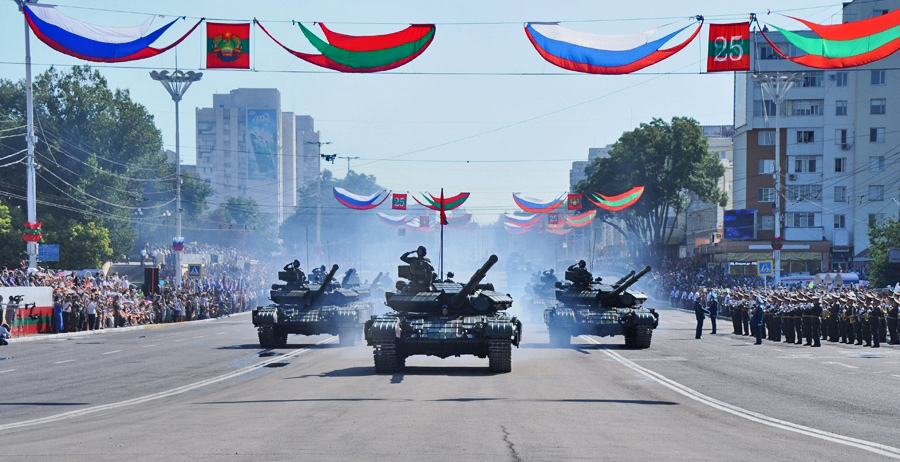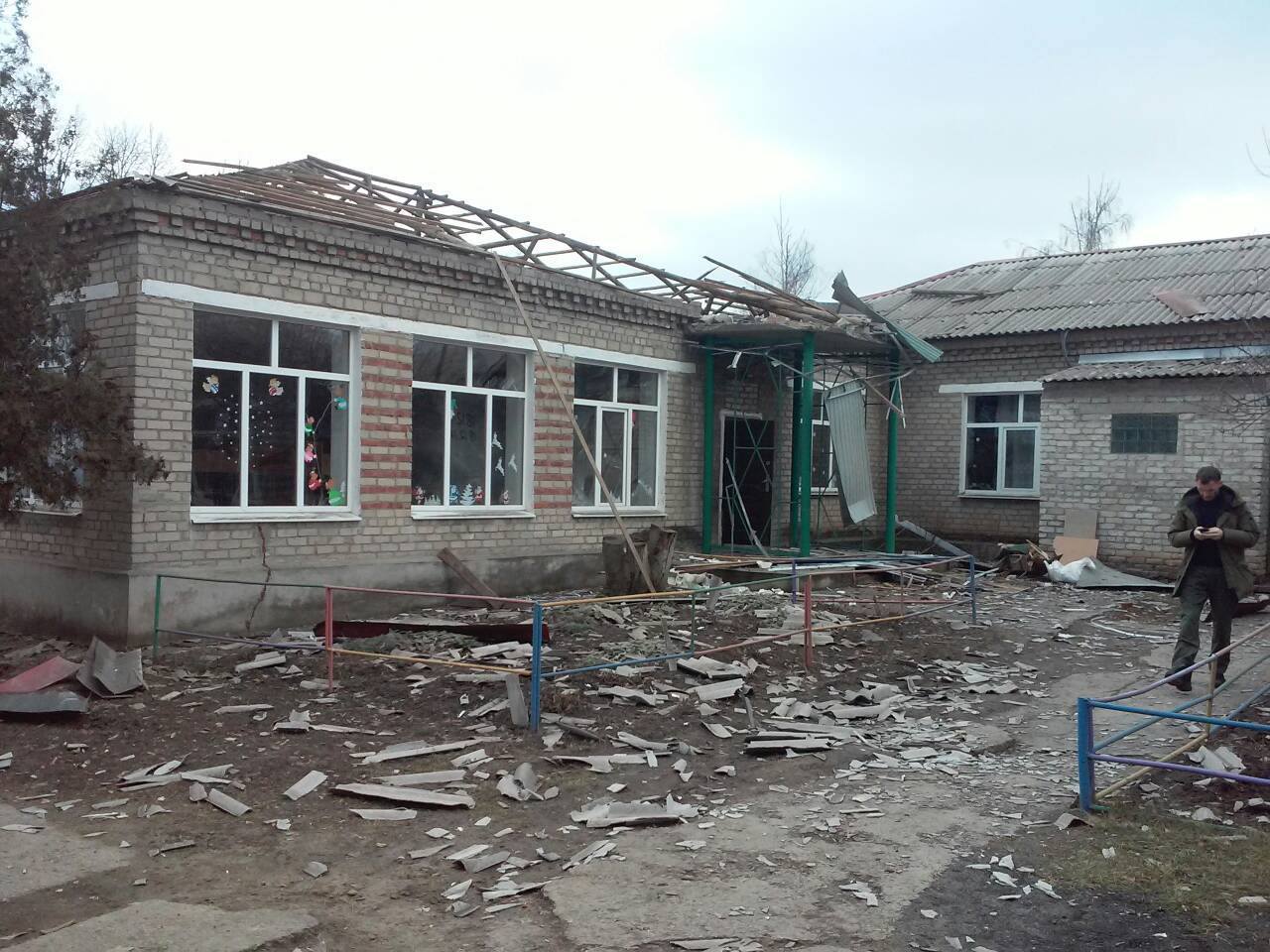Whenever the connection of Russian military personnel to events in Transnistria, the separatist-controlled territory of Moldova, or in the occupied territories of Ukraine’s Donbas, come up, Russia is quick to deny they were there at all. However, experts associate the unrecognized “Transnistrian Moldovan Republic” and the Luhansk and Donetsk “People’s Republics”(“DNR,” “LNR”) in eastern Ukraine more and more frequently. From the start of Russian aggression against Ukraine, Kyiv and Chisinau have with greater emphasis approached the problem of resolving the Transnistrian conflict and together with experts they search for the possibility of its settlement.
The beginning of the Transnistrian conflict dates to 1992: it was then that the industrialized, majority Russian-speaking eastern bank of the Dniester River de facto separated itself, with the support of the Russian army, from the rest of Moldova, as if it had acquired independence.
As Western experts note, the ideological conflict between Moldova and its rebel region has continued until the present day, as have political and diplomatic attempts from the international community to resolve the conflict. Speeches by Western politicians and diplomats, as well as by the Moldovan authorities, regarding Transnistria are nearly identical: the settlement of the Transnistrian conflict can only be achieved through political or legal means, via discussions with the participation of all interested parties. Ruslan Bolbochan, Kyiv’s ambassador to Moldova, echoed the position of the Moldovan government in discussions concerning the Transnistrian settlement.
“We support and we stand for the multilateral political settlement of the Transnistrian conflict on the basis of territorial unity and independence of Moldova in the framework of internationally recognized borders, with the provision of a particular status for the Transnistrian region. We stand for the transformation of the current peacekeeping mission from a military to a civilian mission with an international mandate and a full withdrawal of the Russian military from the territory of the Republic of Moldova,” the diplomat said.
That is the position of Ukraine, which is an active participant in international efforts to resolve the Transnistrian conflict.
“The position of Ukraine has been and will be without change: this will bring the quickest settlement of the Transnistrian conflict on the basis of sovereignty and territorial integrity of Moldova. This is the mandate which has been given me by President Poroshenko, and there will be no compromises on it,” Viktor Kryzhanivskyi, the special representative of Ukraine for the Transnistrian settlement, explained in discussions organized by the New Europe analytical center.
“Russia is not ready to withdraw its military from Transnistria”
Diplomats and independent experts are certain: without the withdrawal of the Russian military and the demilitarization of Transnistria, a resolution to the conflict will not be possible, just as a resolution of the conflict in Ukraine’s Donbas will not be possible without the withdrawal of Russia’s army from that region. But Russia continues to maintain its military presence in the unrecognized territory of Transnistria as well as in the occupied territories of Donetsk and Luhansk.
An idea has recently become widespread among Ukrainian experts: that Russia could attack southern Ukraine from the direction of Transnistria, taking advantage of its “peacekeeping” forces in the region. President Petro Poroshenko has called Russia’s military presence in the region, along with its aggressive foreign policy on the whole, a special danger to Moldova, to Ukraine, and to all Europe.
“The ‘Russian World’ turns all it touches into ruin and desolation. Look at Abkhazia, South Ossetia, Transnistria, occupied Donbas and occupied Crimea. According to the doctrine responsible for the ‘Russian World’, all Europe must look like Kaliningrad and occupied Donetsk,” Poroshenko stated at the Munich security conference of February 2018.

According to expert data, Moscow is holding more frequent military exercises on the territory of Transnistria. These drills include participation by military engineering formations, according to Leonid Litra, an expert from the New Europe center.
“Since the beginning of Russian aggression in Ukraine over 100 military exercises have been held in Transnistria, and they are important because exercises by the Russian occupation forces there include both local Transnistrian armed formations and the Russian ‘peacekeeping contingent.’ Participants in the exercises strive to frighten Moldova with an imitation of a crossing of the Dniester River by the use of military pontoon bridges.”
Last year the Constitutional Court of Moldova judged the presence of the Russian military on the eastern bank of the Dniester as illegal, and Pavel Filip, the Prime Minister of Moldova, appealed to Russia at the aforementioned Munich Conference with a demand to withdraw its military from Transnistria. Ukraine, in its turn, announced its readiness to grant a “Green Corridor” for the withdrawal of the Russian army from Moldova.
“Our principal position is that the Russian military must withdraw from Transnistria, it should have been withdrawn long ago. We give our wholehearted agreement for this. But Russia is not ready to withdraw its army,” explained Special Representative Viktor Kryzhanskyi.
In addition to this he reposted a message on Facebook from Russian Vice-Prime-Minister Dmitriy Rogozin, in which the Russian government official called a Russian military withdrawal from Transnistria impossible because, he said, it is necessary for Russia to defend its “compatriots” who live in the region.
Meanwhile mercenaries from Transnistria have participated in the building of the “Russian World” in Ukrainian Donbas. Journalists from RFE/RL have reported on the presence of Transnistrians within “DNR” formations.
Cross-border cooperation between Moldova and Ukraine to reduce risks
Moldova and Ukraine, with the support of the European Union, try to reduce the dangers and risks in the region. Thus, on the Transnistrian sites of the Moldovan-Ukrainian border, a system of border monitoring has been enforced with the support of the European Commission.
In July of 2017 President of Ukraine Petro Poroshenko and Prime Minister of Moldova Pavel Filip began work on a joint border and customs control for the Kuchurhan-Pervomaisk crossing-point.
“We continue our joint work on rebuilding infrastructure with the cooperation of our partners in the European Union, to create more comfortable conditions at Kurchuhan for our citizens crossing the border. From now on Ukrainian and Moldovan border guards and customs officials together with representatives of the EU Border Assistance Mission will work to provide security and comfort to our citizens,” President Poroshenko said.
Petro Kraliuk, Prorector of the Ostrih Academy, wrote on the RFE/RL website that the opening of joint customs control at the Kuchurhan-Pervomaisk crossing is one step for the strengthening of the border site and the improvement of the security situation in southern Ukraine.
“Russians actively threatened to play the ‘Transnistrian card’ after the Revolution of Dignity. In March of 2014 the ‘high council’ of the ‘republic’ appealed to the State Duma of the Russian Federation with a proposition to annex Transnistria to Russia. They prepared to integrate this construct with the so-called ‘Novorossiyan Republics’ – especially with ‘Novorosses’ in Odesa,” the expert wrote.
“Russia, as a party to the conflict, strengthens its own presence in Transnistria, yet Russia has continuously distanced itself from the conflict throughout the last 20 years, positioning it as an internal problem between Moldova and Transnistria. However, from a legal point of view, especially in the context of the decisions of the European Court of Human Rights, Russia carries responsibility for everything which has occurred in and because of Transnistria,” Leonid Litra said.
In his words, the same is true of the Kremlin’s statements and actions on the occupied territory of Ukraine’s Donbas.
Read more:
- Transnistria. Why Russia should leave the occupied territories
- Ukraine helps Moldova regain control over border in Transnistrian region
- Transnistria frozen conflict zone recognizes Russian tricolor as second “national” flag
- European Court of Human Rights ruled Russia responsible for actions of Transnistria
- Why Ukraine must avoid the Transnistrian scenario








